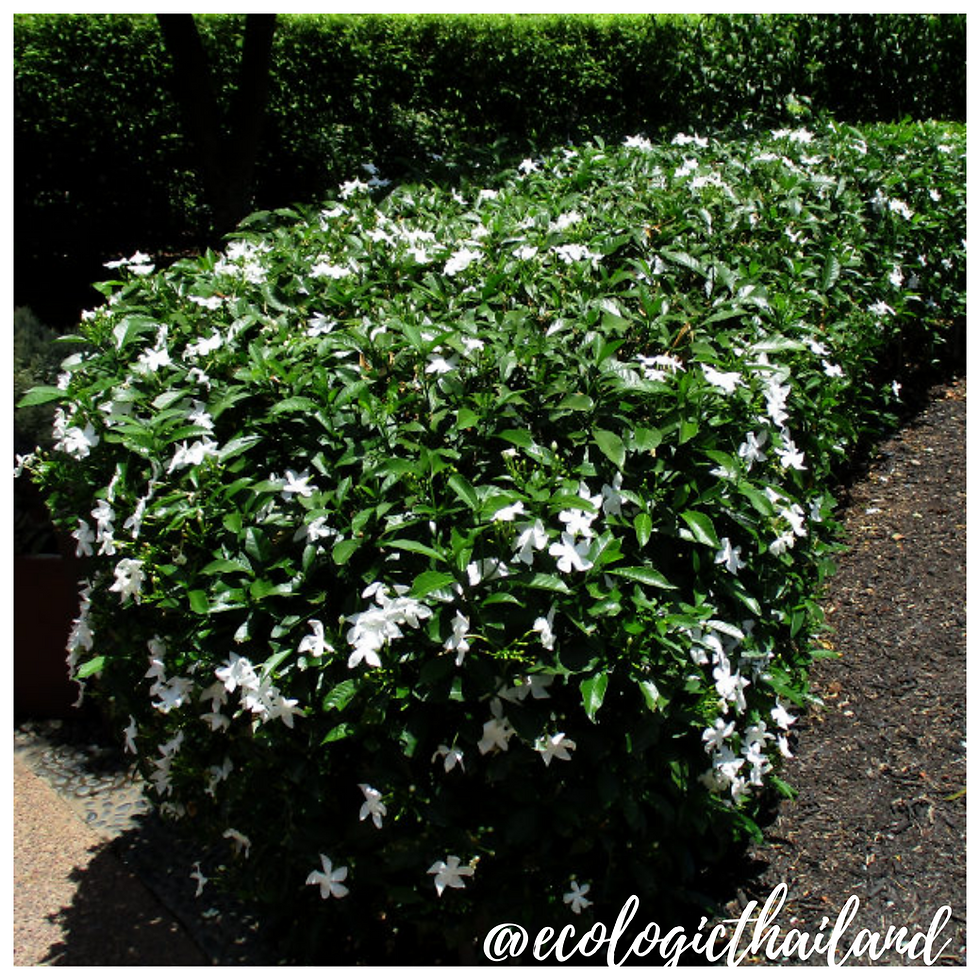Okra
- Eco-Logic Resort
- Dec 31, 2020
- 2 min read
Phak Krateejub | ผักกระเจี๊ยบ | Abelmoschus esculentus
Family: Malvaceae - Genus: Abelmoschus

Okra is grown in the vegetable gardens of the Thai Child Development Foundation.
The plant, also called gumbo and ladies' fingers, is an annual flowering plant that grows to a height of 0.6–2.4 meter.
Okra is grown for its immature pods, which contain a gum that makes a thick, slimy mucilage and which are used to thicken soups and stews and as a vegetable.
Okra is grown and harvested in the end of the rainy season in Thailand. In Paksong this is in September-October.

THE PLANT
Okra, also called gumbo and ladies' fingers, is an annual flowering plant . The large-flowered, fast-growing plants can reach 60 to 2 meter tall .

THE LEAVES
The woody stems of the okra plant bear leaves that are lobed and are generally hairy, some reaching up to 30 centimeter in length.
Young okra leaves may be cooked in a similar way to the greens of beets or dandelions, or in salads.

THE FLOWERS
The okra flowers are large around 5 centimeter in diameter, yellowish hibiscus like, with red or purple centers which will last only for a day.
Each blossom develops a small green pod.

THE FRUIT
The fruits are green to dark green, sometimes yellow to red; long, conical and ridged. T
The many-ribbed fruit pods are picked for cooking, canning, and freezing when they are young and tender, ar3 5–10 centimeter in length.
Okra seeds may be roasted and ground to form a caffeine-free substitute for coffee.
CULINARY USES
The fruits or pods containing seeds are harvested when immature and are eaten as vegetables.
Young okra leaves may be cooked in a similar way to the greens of beets or dandelions, or in salads.
Okra seeds may be roasted and ground to form a caffeine-free substitute for coffee.
In Thailand okra is used in stir fries and in curries.
NUTRITION
Raw okra is 90% water, 2% protein, 7% carbohydrates and negligible in fat.
Okra is a very good source of dietary fiber, magnesium, manganese, potassium, vitamin K, vitamin C, folate, B1, and B6.
TRADITIONAL MEDICINAL USE
NOTE: please take advice from a doctor if you are planning to use herbal medicine.
Okra may benefit pregnant women, heart health, and blood sugar control. It may even have anticancer properties.
In Asian traditional medicine, okra fruits are served as mucilaginous food as a dietary meal in the treatment of gastric irritations and inflammative diseases
INTO THE WILD: a down to earth experience

For guests and visitors to Paksong we organize weekly tours "The Edible Forest" and Foraging weekends: Into the Wild. We work with local guides to take you in the jungle of Paksong. After foraging, we will cook a meal with the ingredients, using bamboo together with you!
Come and join and learn about the abundance of food that nature gives us!
INTO THE WILD!


















Comments